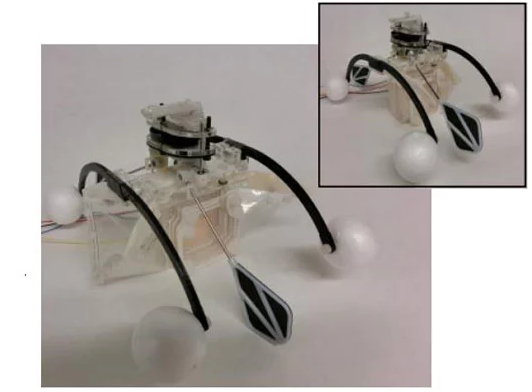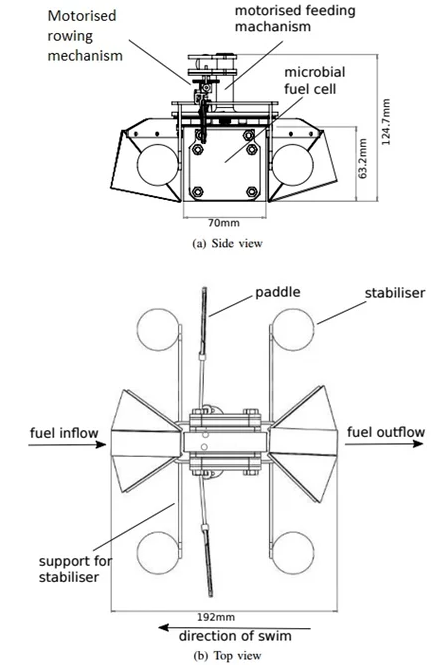Watch out, Wall-E, it looks like you’ve got some competition. There’s a new robot in town that’s able to float on water, eat algae, and then turn it into electricity that it uses to power itself.
Called “Row-bot,” this tiny bot was developed by a team from the University of Bristol and was presented earlier this fall at the IEEE/RSJ International Conference on Intelligent Robots and Systems in Hamburg, Germany. The group’s idea was to create an autonomous robot that could forage for algae by itself.

Pictured above is Row-bot with an open mouth to take in water. The inset shows the device with its mouth closed. Image source: Gizmag.
By using two air chambers, the robot floats on water, and it propelled by two paddles that are powered by a microbial fuel cell (MFC). These MFCs contain electrogenic bacteria, which “digest” algae when they come into contact with it, creating carbon dioxide as a by-product, along with electrons and protons needed to produce an electrical charge, similar to the inside of a battery.
When Row-bot takes in a few gulps of water, it converts the liquid into electricity that it uses to make its paddle strokes. By thrusting forward, the algae-filled water comes into contact with the MFC, and the cycle repeats. Currently the bot has been tested in small ponds, but according to the team, it can also function in seawater.

Row-bot’s microbial fuel cell ingests microbes and provides power for an electric motor to drive paddles for propulsion through the water. Image source: Gizmag.
Not only is Row-bot the first practical application of a machine powered by a single MFC, but it also creates more energy than it needs to refuel, acting as a mini mobile power plant. Ideas for this robot in the future include having fleets of these machines chowing down on algal blooms, effectively acting as an environmental cleaning service.
Researchers also believe this device has the potential for remote sensing and environmental monitoring. That said, the next step planned for Row-bot is the integration of monitoring and control subsystems, along with additional switching circuitry that’s all powered by the MFC.
Source: Gizmag
Advertisement
Learn more about Electronic Products Magazine





